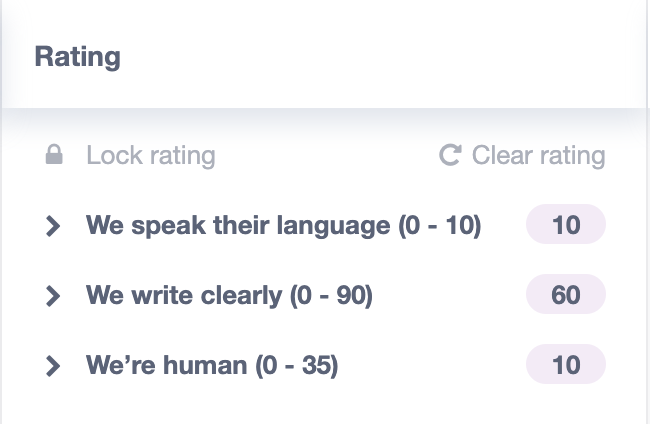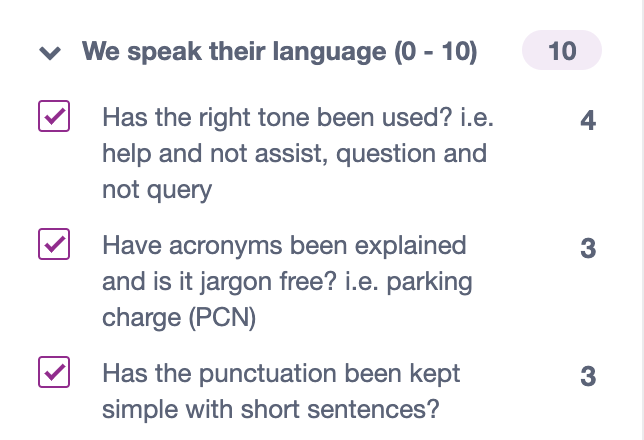Put simply, quality assurance is a promise. A promise from your team to uphold an excellent standard of support that aligns with your company’s values. So how do you make sure you don’t break that promise?
Well, this promise is a bit more complex than just a yes or no. Upholding quality assurance requires a systematic analysis of your team’s interactions, measuring the service they are delivering against what you’ve promised to your customers.
So how do you measure this? Well, lucky for us we now live in a world where data is our friend. Qualitative rubrics have become quantitative metrics. I’m sure by now you’ve heard of customer support metrics like CSAT, NPR, and CES. These are all great tools to measure how your customer perceives your quality of service, but how do you see your service?
The customer is always right. True? That may be the case when it comes to crisis resolution, but when it comes to the inner workings of your company- you know best. Teams are often so concerned with ensuring the satisfaction of the customer, that the internal quality is left by the wayside.
That’s where Internal Quality Rating (IQR) comes to the rescue. What is IQR? It is the result of conversation analysis’, represented by a number that rates the quality of interaction against a company’s standards criteria.
IQR is a big part of Kaizo, a gamification and AI-based tool that takes the hassle out of measuring and improving on agent performance. We understand that not every company shares the same vision or the same idea of what quality service looks like. So we’ve created a completely customizable reviewing system that allows you to select and value each criterion according to your desired auditing style.
Here is a simple guide on how to set up IQR for your team:
1. Define your mission
2. Customize your Quality Standard Criteria
3. Measure the current quality of performance against this standard
4. Reflect and improve on your results
1. Define your mission
Customer support metrics are great, but before you get too excited, you need to get back to the basics of what it is your company is trying to do.
Think simple:
- What are our goals and values? For that, you need to develop a mission statement. How do you want to be perceived? What service do you want to provide? This establishes a culture within the workplace to ensure a consistent message for both your customers and your team.
Take for example Kaizo’s mission:
We combine meaningful data, AI and gamification to empower everyone to make data-driven decisions.
It doesn’t matter what you create as your mission, as long as you focus on your top priorities and unique qualities. There’s no right or wrong answer. This doesn’t have to be done by top management- its the team’s culture so get together and bounce around some ideas of how you want to be perceived.
- Who do you serve and what do they need?
I’m sure by now you’ve done enough research into establishing your target audience. So use this information to establish whether your vision aligns with their needs. How do you know what their needs are? Sift through any customer feedback you have collected in the past from all platforms. This is essential in creating a consistent standard of quality.
2. Customize your Quality Standard Criteria (QSC)
This is where it gets fun. Now that you’ve established your overall goal in your mission statement, it’s time to get specific. Whilst these specifics are subjective, it is important to create your QSC as a team, to reflect the mission of the company as a whole.
- Get Specific: Refer back to your mission statement and extract 3–4 specific goals that you want to achieve. This may include decreasing your agents’ interactions per resolution, improving the team’s overall product knowledge or just increasing your CSAT score. Setting these specific goals will allow you to pinpoint what aspects of conversations should be reviewed and allow for consistency in your evaluations.
- Create your rating categories: What do you really care about when it comes to quality service? Kaizo allows you to create your own custom categories based on what you think is most important. For example:

- Create criteria to score each category: Once you have created your categories, customize your own criteria list within each category to measure how well each ticket was addressed in accordance with your goals. You can choose a numerical weight for each criterion based on its importance in achieving your quality standard.

Make sure to always refer back to your mission statement to ensure that you assess what matters most to you, providing the service you want to the standard that you want.
3. Measure the current quality of performance against this standard
Now that you’re set-up, you’re probably thinking, how do I make sure that I measure tickets properly and fairly? Once again that is completely up to you. To give you a little push in the right direction, Kaizo provides multiple different styles to fit your company’s needs:
- Managerial: Long gone are the days when your team lead sends you a message asking to have ‘extra training’ at their desk. The top-down approach allows managers to review agents’ conversations, rate them against criteria, and leave a comment with any further notes, within a matter of clicks.
- Peer to Peer: From the agents, for the agents. Who better to ask for advice on your job, than someone who’s doing the exact same one. Peer to peer review allows for a democratization of feedback power, instilling a standard of consistent quality throughout the entire team. Not to mention saving the team manager A LOT of time.
- Self-Review: The first step to growth is identifying your mistakes. Agents can review their own conversations and mark their results against how others scored them, clearly identifying areas that need some extra work.
As I said, these are the tools to get the job done but get creative. Mix and match your review styles and find an approach that works best for your company to identify problem areas and move towards cohesive growth.
4. Reflect and improve on your results
Internal reviews are going to improve your quality of service drastically. The power of this customer support metric is that it is yours. Unlike contextual factors relating to CSAT, like the fact that Bob’s girlfriend dumped him 2 hours before your call. YOU have control.
Here are three tips to reflect and continually improve on your quality of service:
- Continually review your criteria and update according to changing the landscape: Much like a restaurant menu, your standards criteria cannot remain the same forever. As your company expands, your customer reach is greater and more diverse and so too is your service approach, your standards of quality may vary. It is important to review your criteria quarterly to ensure that they still align with your mission statement and are consistent thought out the team.
- Set future goals for agents to hit targets: Treat Internal Quality Assurance like any other KPI. Set goals for agents to achieve higher IQR averages with added incentives. Stop focussing only on external quality metrics and look for a healthy balance to ensure that your agents are providing what is considered a high standard of service by your team and the customer.
- Incorporate IQR into your weekly routine: Think of this like going to the gym. If you don’t engage consistently you’re not going to see results. Your team should set standards as to how many tickets each agent should review per week to help run their ratings smoothly like we do it in Kaizo.
So get customizing, because if you want to ensure that your quality standards are high from the inside out, then Internal Quality Reviews are a no-brainer. If you set up criteria that reflect your company’s mission you will be able to more easily measure the service quality of your agents and continually improve as your team develops.
Using automation software saves both managers and agents precious time to focus on what really matters to them. Whilst most CS teams are spending precious time on manually creating internal reviews in spreadsheets, companies are starting to switch to Kaizo, which does all the work for you. All you have to do is type in your criteria and Kaizo will take care of the rest.
Recommended Reading
If you’re using Zendesk, check out Kaizo to start implementing these best practices today! Drop us an email at hello@kaizo.com!



